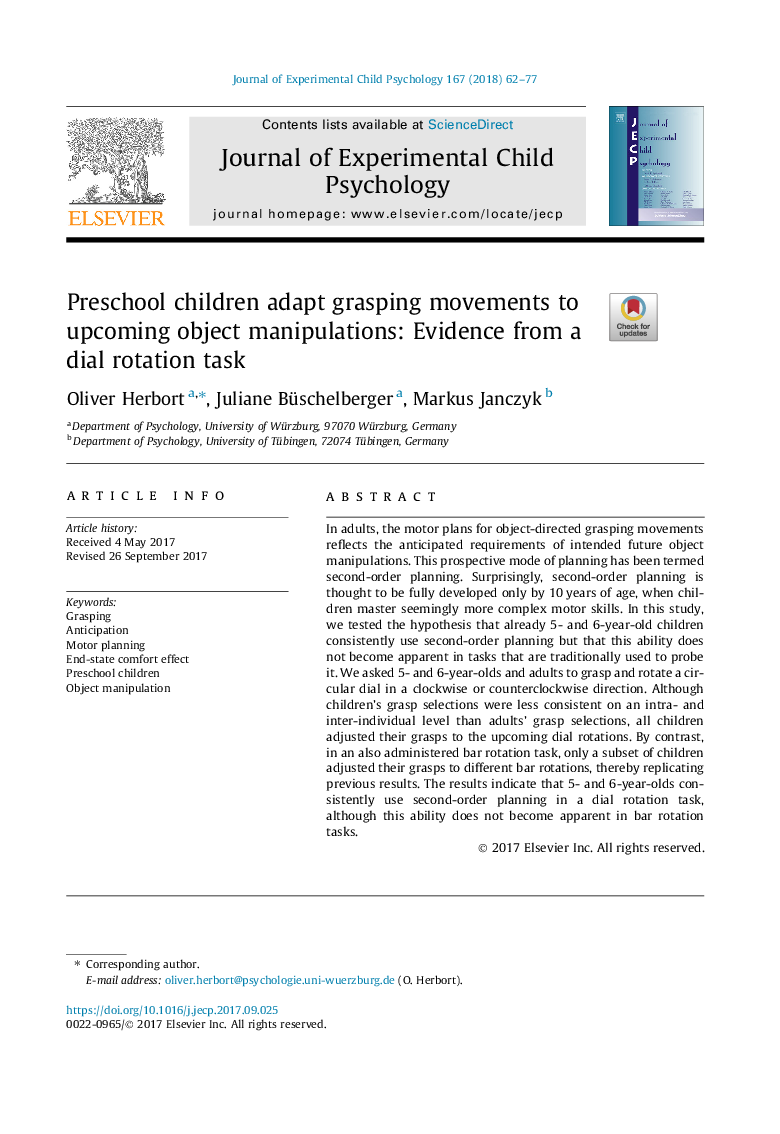| Article ID | Journal | Published Year | Pages | File Type |
|---|---|---|---|---|
| 7274073 | Journal of Experimental Child Psychology | 2018 | 16 Pages |
Abstract
In adults, the motor plans for object-directed grasping movements reflects the anticipated requirements of intended future object manipulations. This prospective mode of planning has been termed second-order planning. Surprisingly, second-order planning is thought to be fully developed only by 10â¯years of age, when children master seemingly more complex motor skills. In this study, we tested the hypothesis that already 5- and 6-year-old children consistently use second-order planning but that this ability does not become apparent in tasks that are traditionally used to probe it. We asked 5- and 6-year-olds and adults to grasp and rotate a circular dial in a clockwise or counterclockwise direction. Although children's grasp selections were less consistent on an intra- and inter-individual level than adults' grasp selections, all children adjusted their grasps to the upcoming dial rotations. By contrast, in an also administered bar rotation task, only a subset of children adjusted their grasps to different bar rotations, thereby replicating previous results. The results indicate that 5- and 6-year-olds consistently use second-order planning in a dial rotation task, although this ability does not become apparent in bar rotation tasks.
Keywords
Related Topics
Social Sciences and Humanities
Psychology
Developmental and Educational Psychology
Authors
Oliver Herbort, Juliane Büschelberger, Markus Janczyk,
